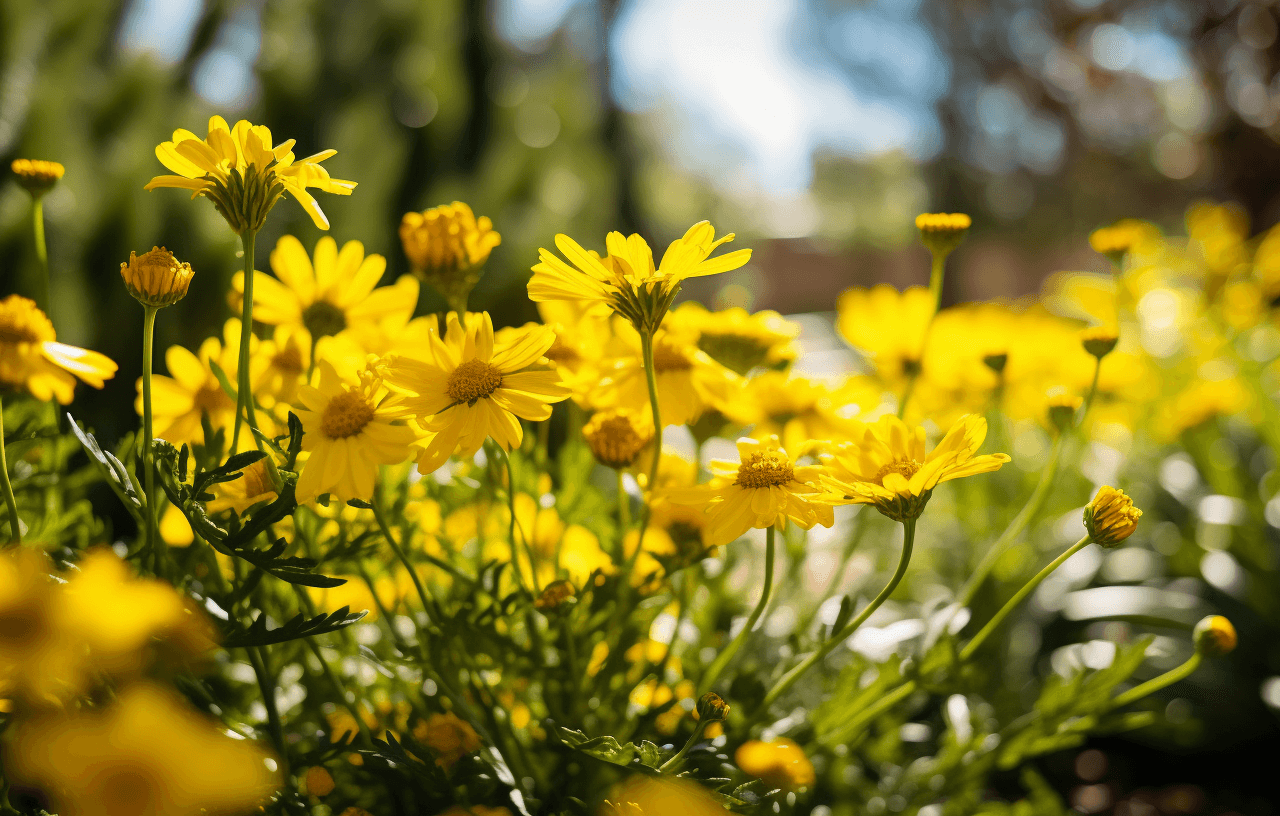Euryops Pectinatus: A Golden Daisy’s Growing Guide

| 🌼 Perennial | |
| 📏 Size: 1m high, 1m spread | |
| 🐝 Great for pollinators | |
| ❄️ Half-Hardy |
In the wide panorama of the gardening world, Euryops pectinatus (Grey-leaved euryops), commonly known as the Golden Daisy Bush, is a welcome addition to any garden. Its bright yellow daisy blooms and feathery foliage are a radiant spectacle.
Yet, like every botanical wonder, it comes with its own set of care guidelines. Native to South Africa, let’s discuss the best ways to help this beautiful flower thrive in your garden.
Finding the Perfect Spot
For a plant that mirrors the sun, it’s unsurprising that the Euryops pectinatus loves a position with full sun. A spot where it can receive at least 6-8 hours of direct sunlight daily will see it flourish and bloom prolifically, though it will also grow well in a sheltered sunny border.
Soil Conditions
This daisy is no diva when it comes to soil. Well-draining soil is crucial, as soggy roots can lead to root rot. A mix of regular garden soil with a bit of coarse sand can create an ideal environment for its roots and help its long stalks stay strong.
Watering Ritual
Water deeply but infrequently. The Golden Daisy Bush is drought-tolerant once established, making it a joy for those occasional forgetful gardeners. However, during its initial growth phase, regular watering is essential.
Fertilising Needs
While the Euryops pectinatus isn’t particularly demanding, a light feeding in early summer or spring with a balanced, slow-release fertiliser can bolster its growth and flowering.
Guarding Against Frost
Although hardy, young Euryops pectinatus plants can be susceptible to frost damage. In cooler regions, consider offering some winter protection during those colder nights. If your plant is grown in a pot, then consider moving it to a sheltered place out of the reach of frost. For plants grown directly in the ground, maybe in borders, then try covering with a fleece if you want to protect against early frosts.





